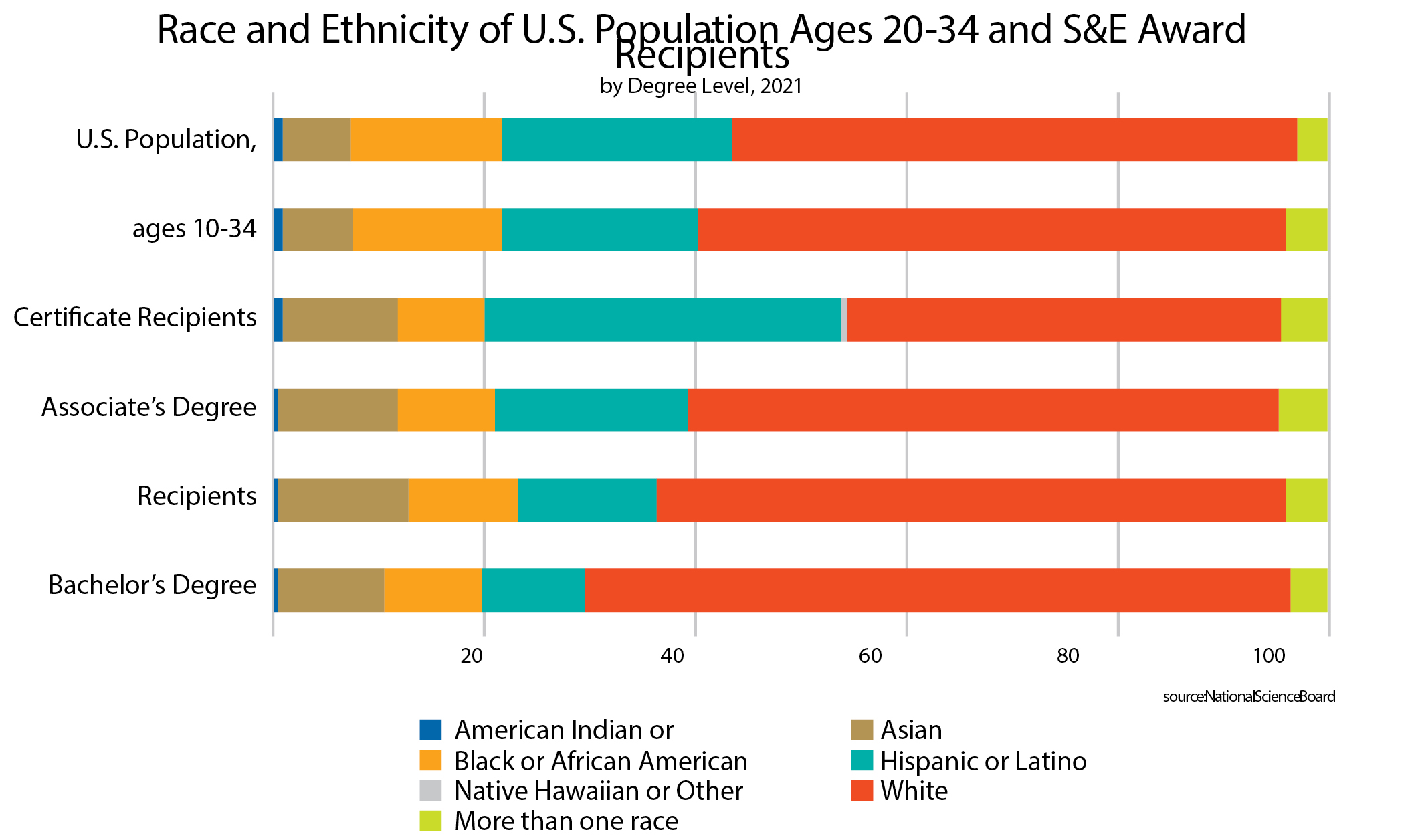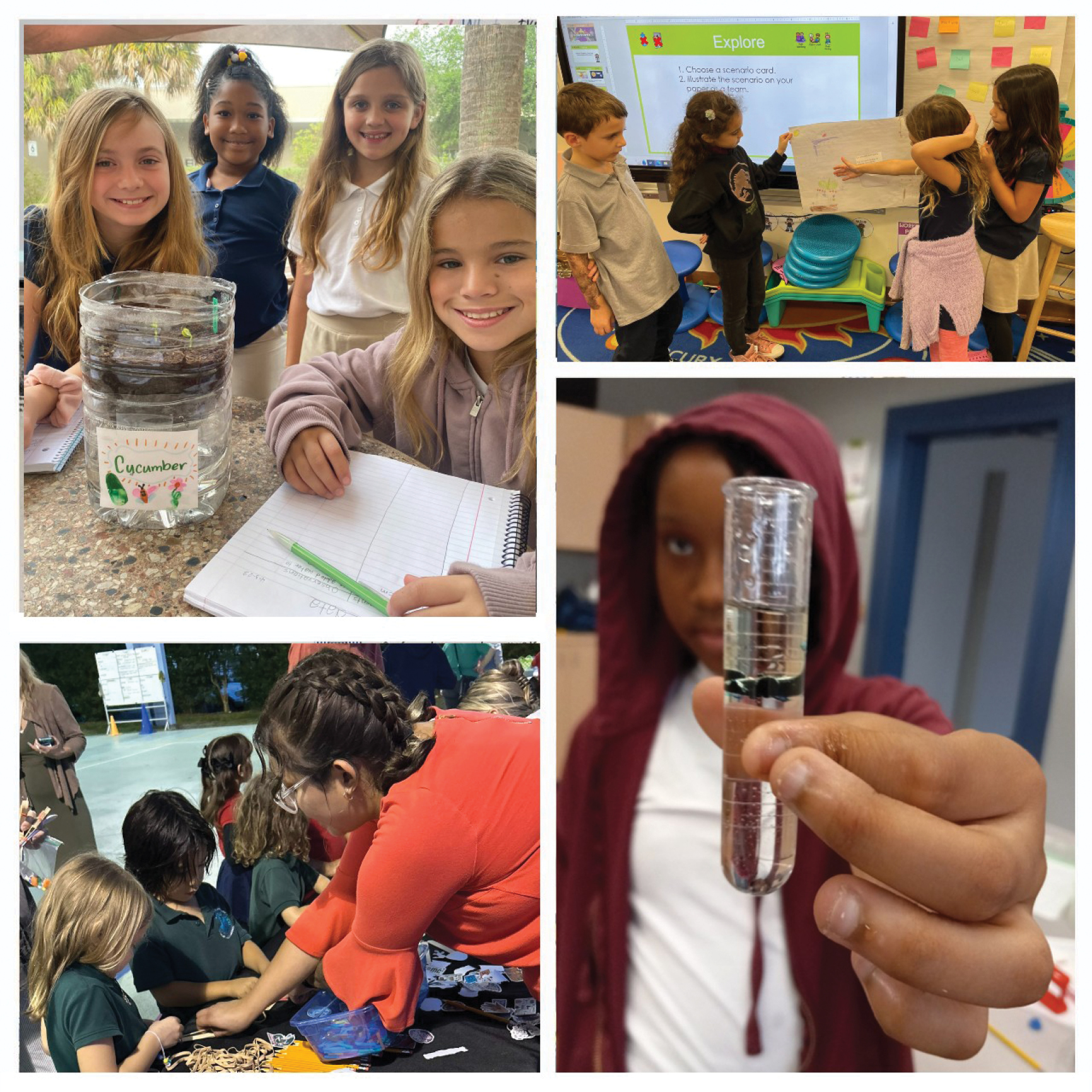STEM (science, technology, engineering and mathematics) programs have been part of education curricula for more than two decades as businesses exert pressure on schools to better equip students for entering the 21st century job market. Schools got the message, and today, not only do most traditional middle and high schools offer STEM programs, but STEM-specific schools can be found in many communities. The L&N STEM Academy in Knoxville, Tennessee, and the Paul Duke STEM High School in Norcross, Georgia, are two examples.
But a challenge has emerged in recent years, particularly in higher education. A growing body of evidence points to a significant underrepresentation of several demographics — including women, Blacks and Hispanics — in STEM programs, leaving them unlikely to achieve science and engineering degrees. Greater representation among these groups would go a long way toward meeting industries’ workforce needs.

The challenge is perhaps best explained in an October 2021 National Science Foundation report, “The Missing Millions: Democratizing Computation and Data to Bridge Digital Divides and Increase Access for Underrepresented Communities.” The research was led by Alan Blatecky at RTI International, a nonprofit research institute in Research Triangle Park, North Carolina.
From the executive summary: “In the context of the cyberinfrastructure for science, addressing the missing millions includes racial and gender diversity as well as diversity in fields and disciplines served, inclusion of tribal communities, expanded access for citizen scientists, and applications of the cyberinfrastructure in ways that more extensively address broader impacts in society. All of this will take a concerted effort — democratizing computation and bridging digital divides.
“Computing and data infrastructure — part of what the NSF terms cyberinfrastructure — is relevant to virtually all fields and disciplines and is essential for 21st-century science and research. Thus, progress (or lack of progress) in this domain is integral, impactful and informative to any efforts to address the missing millions across the science, technology, engineering and mathematics (STEM) workforce.”
Similarly, a November 2023 National Science Board (NSB) report, “Higher Education in Science and Engineering,” makes the case that higher education must work harder to increase demographic diversity in their science and engineering programs.
“Demographic diversity in some S&E fields has increased over the past decade,” reads an excerpt of the report’s conclusion. “As of 2021, women earned more than 50% of S&E awards in the agricultural and biological sciences, multidisciplinary and interdisciplinary sciences, psychology and social sciences. On the other hand, women remained underrepresented among award recipients in such fields as engineering and computer and information sciences. American Indian or Alaska Native, Black and Hispanic individuals were also underrepresented, although the percentage of S&E awards that they collectively earned increased at every award level between 2012 and 2021.”

Heather Wilson, National Science Board member and president of the University of Texas at El Paso, noted in NSB’s press release, “It’s clear we are not moving fast enough to reach the ‘Missing Millions’ in STEM, in spite of the fact that more students are studying science and engineering.”
Resources to the Rescue
Efforts are under way to fix the problem. In February 2023, for example, Carnegie Mellon University and the Norman and Ruth Rales Foundation announced the CMU Rales Fellows Program to facilitate STEM graduate education by removing cost as a barrier by providing underrepresented students with full tuition, a stipend and professional development resources. The $140 million program aims to underwrite 86 graduate students annually in STEM programs at the university.
“The United States faces a critical shortfall of students pursuing advanced degrees in STEM fields, particularly among underrepresented and under-resourced individuals, including first-generation college students,” noted CMU President Farnam Jahanian. “These students report cost and debt as significant barriers to seeking Masters and PhD degrees in fields critical to our nation’s future. This is a loss of opportunity for individuals and a loss of talent and creativity for society.”
“These students report cost and debt as significant barriers to seeking Masters and PhD degrees in fields critical to our nation’s future. This is a loss of opportunity for individuals and a loss of talent and creativity for society.”
— Farnam Jahanian, President, Carnegie Mellon University
STEM investment for niche markets is also under way, such as Electrify America’s March 2023 investment of $1.6 million to support STEM workforce development programs targeting the zero-emission vehicle industry. The company operates the largest network of fast charging stations for ZEVs in the country.
The organizations benefiting from the investment are Acterra and Ecology Action, both of which are California-based environmental advocacy groups; EVNoire, which focuses on e-mobility best practices and diversity; Sinclair Community College in Dayton, Ohio; and Valley Clean Air Now, which works to reduce emissions in California’s San Joaquin Valley.
“Investing in STEM education and workforce development is essential to ensure we have the talent necessary to drive the electric vehicle revolution,” said Gabriela Gugiu, corporate social responsibility senior specialist, Electrify America, in announcing the grants. “The future of transportation is electric, and we want to ensure that our youth and workforce of both today and tomorrow have the education and training necessary to succeed in this rapidly growing industry.”

